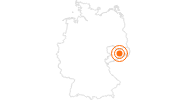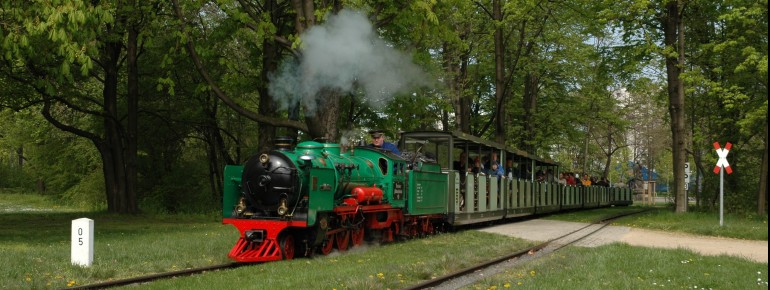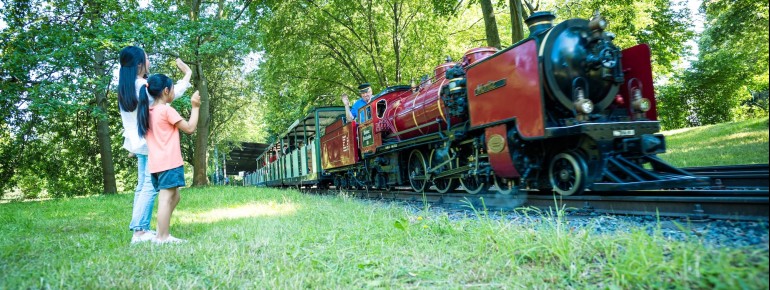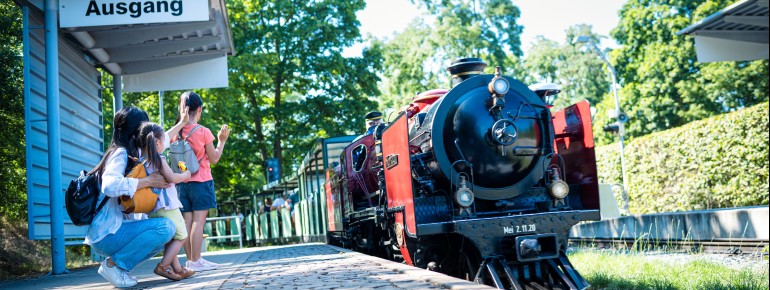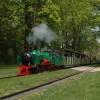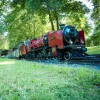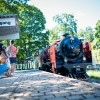Contents
Description
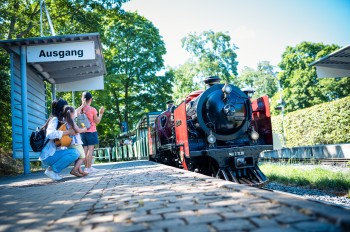
For 75 years, the Dresden Park Railway has been running its routes through the Großer Garten – a green oasis in the heart of the city. What began as a children's railway is now a true attraction: with steam locomotives, five stations, and over 200,000 passengers per season, it has become an integral part of Dresden's cityscape. Between baroque avenues, ponds, and meadows, it combines nostalgic railway charm with modern youth work – making it much more than just a charming tour around the park.
Anyone visiting the Großer Garten in Dresden will encounter it sooner or later: the small train with great charm. The Dresden Park Railway has been winding its way through the 147-hectare park for decades – passing ponds, meadows, and avenues that combine baroque garden design with English landscape architecture. A tour through this green oasis lasts about 30 minutes – an experience that is equally appealing to railway enthusiasts and park lovers.
The 5.6-kilometer route connects five stations, where visitors can get on and off at will. Whether at Palaisteich, Carolasee, or the zoo, each station offers its own perspective on the park and is now complemented by interactive elements that provide insights into the technology and operation of the railway.
What makes the Dresden Park Railway special are its historic vehicles. On weekends and public holidays, weather permitting, the two nearly 100-year-old steam locomotives, "Lisa" and "Moritz", are used. Their characteristic whistle and rising clouds of steam create a nostalgic atmosphere. During the week, modern electric accumulator locomotives take over the operations. From April to October, the train operates regularly every 15 to 30 minutes.
What makes the park railway truly unique is that the entire operation is largely run by children and teenagers. About 170 young park railway workers under the age of 18 take on tasks such as ticket sales, train accompaniment, station service, or train control. They are supported by professionals and volunteers. The multi-year, free training provides not only technical knowledge but also fosters responsibility, teamwork, and communication skills. This combination of leisure fun and career orientation is unique in Germany.
Historical Information
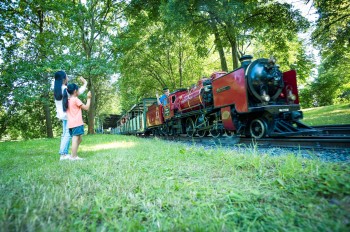
The history of the Dresden Park Railway began in 1950, at a time when many children sought distraction, joy, and structure after the war. To provide exactly that, the idea for a children's railway that would run through the Großer Garten in summer was born. On June 1, 1950, the first ride took place, and it was immediately well received. At that time, the operation was managed by the Dresden Transport Services.
The transformation of the initial summer project into a permanent institution is largely thanks to the efforts of the children themselves. According to legend, they even traveled to Berlin to personally appeal to Walter Ulbricht for the preservation of the railway. Just a year later, the railway became a pioneer railway, further developed in the Soviet style and established as a permanent institution.
After the reunification, the future of the narrow-gauge railway was initially uncertain. However, a newly founded support association was determined to continue the operation independently – and succeeded. In 1993, the park railway, along with the Großer Garten, was handed over to the care of the Free State of Saxony.
Interesting facts
- The day pass at Dresden Park Railway is €8 making it one of the 3 cheapest tourist Attractions in Saxony.
How to get there
The Dresden Park Railway is located in the Großer Garten, one of the city's largest and most central parks. Nearby are well-known attractions such as the Dresden Zoo and the Gläserne Manufaktur.
For those traveling by car, Dresden is easily accessible via the A4 or A17 highways. Well-developed access roads lead into the city center. Within the city, follow the signs for "Zoo" or "Gläserne Manufaktur." Parking is available on the surrounding streets or at Georg-Arnhold-Bad. Car entry into the Großer Garten is not permitted.
Public transport is also straightforward. Tram lines 1, 2, 4, 10, 12, and 13 as well as bus lines 61, 63, 75, and 85 stop at several nearby stations, including Straßburger Platz, Comeniusplatz, Lennéplatz, and Tiergartenstraße.
Information on accessibility, as well as details about bringing wheelchairs, strollers, and bicycle storage, can be found directly on the Park Railway's website.
